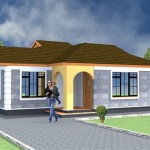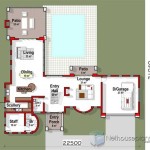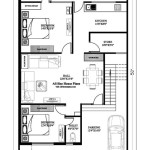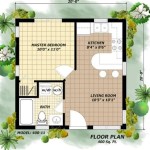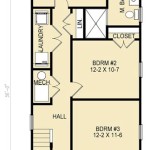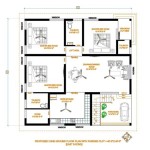Two-Story Detached Garage Plans: Expanding Space and Functionality
Detached garages offer a versatile solution for homeowners seeking additional storage, workspace, or even supplementary living space. Opting for a two-story design significantly amplifies the potential of a detached garage, providing a larger footprint without necessarily increasing the ground-level area. This article explores the multifaceted benefits of two-story detached garage plans, examining key design considerations, potential uses for the upper level, and important regulatory factors to keep in mind during the planning and construction phases.
The decision to build a two-story detached garage hinges on multiple factors, including available land, budgetary constraints, and intended use. Understanding these factors upfront is crucial for selecting the right design and ensuring a successful construction project. The initial investment in detailed planning will yield long-term benefits in functionality and property value.
Optimizing Space and Functionality
The primary advantage of a two-story detached garage lies in its efficient utilization of space. Instead of a single-story structure that maximizes ground coverage, a two-story design allows for a smaller footprint while effectively doubling the usable square footage. This is particularly beneficial for properties with limited yard space or restrictive zoning regulations. The ground level can accommodate vehicle storage, workshop areas, or equipment housing, while the upper level can be configured as a home office, studio, recreational room, or even an accessory dwelling unit (ADU), subject to local regulations.
Furthermore, the increased vertical space afforded by a two-story garage provides enhanced storage capabilities. Shelving can be extended upwards, creating more room for tools, equipment, and seasonal items. High ceilings on the ground floor can also accommodate car lifts, enabling the stacking of vehicles for car enthusiasts or those with limited parking space. The flexibility of the design allows for customization to meet specific storage and operational needs.
The layout of a two-story detached garage should be carefully considered to maximize its practicality. Clear separation of functions between the ground floor and upper level is essential. For instance, a ground floor dedicated to automotive work should have adequate ventilation and easy access to tools and equipment, while an upper level designed as a living space should prioritize natural light, insulation, and soundproofing. Staircase placement is also critical, ensuring convenient access to the upper level while minimizing disruption to the ground floor activities.
Efficient access for moving items to the upper level is also important. Consider the installation of an exterior staircase, a small elevator or lift system, or a robust pulley system to facilitate the transport of heavier objects. Planning for these logistical aspects early in the design phase will enhance the overall utility of the garage.
Exploring Upper-Level Applications
The versatility of the upper level of a two-story detached garage is a significant advantage. It can serve a wide range of purposes depending on individual needs and local regulations. One popular application is a home office or studio. The detached nature of the garage provides a quiet and dedicated workspace, free from the distractions of the main house. Ample natural light, proper ventilation, and comfortable climate control are essential for creating a productive work environment.
Another common use is as a recreational space, such as a game room, home theater, or exercise studio. The separation from the main house allows for louder activities without disturbing other occupants. Proper soundproofing and insulation are crucial for containing noise and maintaining a comfortable temperature. Consider adding features such as a wet bar, bathroom, or dedicated storage area to enhance the functionality of the recreational space.
In some jurisdictions, the upper level can be converted into an accessory dwelling unit (ADU), also known as a granny flat or in-law suite. An ADU can provide additional living space for family members, generate rental income, or serve as a guest house. However, ADUs are subject to strict zoning regulations and building codes, so it's essential to thoroughly research local requirements before proceeding. ADUs typically require a separate entrance, a fully equipped kitchen, a bathroom, and sleeping quarters.
Regardless of the intended use, the upper level should be designed to be comfortable, functional, and aesthetically pleasing. Attention to detail in areas such as lighting, flooring, and wall finishes can significantly enhance the overall atmosphere. Proper insulation and ventilation are crucial for maintaining a comfortable temperature year-round and preventing moisture buildup.
Navigating Regulations and Structural Considerations
Before embarking on a two-story detached garage project, it is essential to thoroughly investigate local zoning regulations and building codes. These regulations govern aspects such as building height, setbacks from property lines, permissible uses, and parking requirements. Failure to comply with these regulations can result in costly delays, fines, or even the demolition of the structure.
Securing the necessary permits is a critical step in the construction process. Contact the local building department to obtain a list of required permits and the application procedures. The permit application typically requires detailed architectural plans, structural engineering calculations, and site plans. It's advisable to engage a qualified architect or engineer to prepare these documents to ensure compliance with all applicable codes and regulations.
Structural integrity is paramount in a two-story detached garage. The foundation, framing, and roofing system must be designed to withstand local wind loads, snow loads, and seismic activity. A structural engineer should be consulted to ensure that the design meets all applicable structural codes. The engineer will perform calculations to determine the required size and spacing of structural members, such as beams, columns, and rafters.
Fire safety is another critical consideration. The garage should be equipped with smoke detectors and fire extinguishers, and the walls and ceilings should be constructed of fire-resistant materials. If the upper level is intended for living space, it may be necessary to install a sprinkler system. Adherence to fire safety codes is essential for protecting occupants and preventing property damage.
Foundation design is also crucial, especially in areas with unstable soil conditions. A geotechnical investigation may be required to determine the soil's bearing capacity and to recommend the appropriate foundation type. Common foundation options include concrete slabs, pier and beam foundations, and full basements. The foundation must be designed to support the weight of the structure and to resist soil movement.
Moreover, ensure the garage design incorporates proper drainage to prevent water damage. The site should be graded to direct water away from the foundation, and gutters and downspouts should be installed to collect rainwater and channel it away from the building. Proper drainage is essential for preventing moisture buildup and prolonging the lifespan of the structure.
Electrical wiring, plumbing, and HVAC systems should be installed by licensed professionals. These systems must comply with all applicable codes and regulations. Ensure that the electrical system is adequately sized to accommodate the anticipated electrical load, and that the plumbing system is properly vented and drained. A properly designed HVAC system will provide comfortable climate control throughout the year.
The exterior design of the garage should complement the style of the existing home and neighborhood. Consider using similar materials and architectural details to create a cohesive look. The garage door should be chosen to match the style of the house, and the exterior siding should be durable and weather-resistant. Landscaping can also enhance the appearance of the garage and help it blend into the surrounding environment.
Finally, consider the long-term maintenance requirements of the two-story detached garage. Regular inspections and maintenance can help prevent problems and prolong the lifespan of the structure. Inspect the roof, siding, and foundation regularly for signs of damage, and address any issues promptly. Keep gutters and downspouts clean to prevent water damage, and maintain the electrical, plumbing, and HVAC systems to ensure they are functioning properly.

Garage Plan 4084 2 Car House Floor Frank Betz Associates

Detached 22 X22 Two Car Adu Garage Loft Architectural Plans Blueprint Digital

2 Car Garage Plans Detached Loft Plan 028g 0018 At Www Thegarageplan Com

Two Car Garage Plans Detached 2 Plan Design 050g 0008 At Thegarageplan Com

2 Car Garage Plans D No 576 14 24 X By Behm Design

Garage Plan Mustang 6986 Drummond House Plans

Two Car Garage Plans

Detached 22 X22 Two Car Adu Garage Loft Architectural Plans Blueprint Digital

Garage Plan G1628a

2 Car Garage Plans Floor Apartment Lofts

